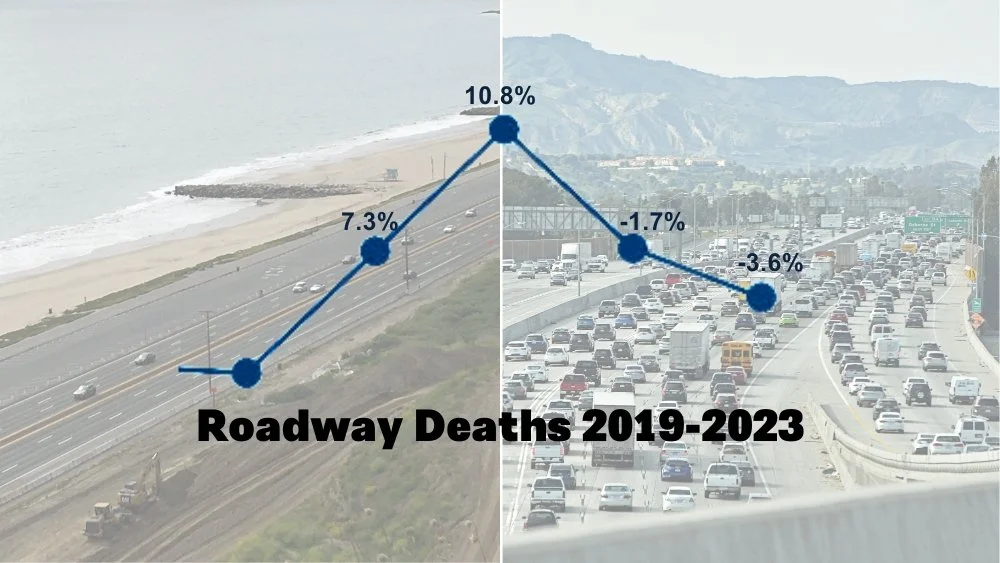In Conversation With An Expert: Jennifer Griffin on the Built Environment and Human Flourishing
Jennifer Griffin, an architect, urban designer, and recent panelist for the Crash Analysis Studio.
Jennifer Griffin’s work is rooted in a deep understanding of the relationship between the built environment and human flourishing. As an architect, urban designer, and founding principal of J Griffin Design, LLC, she strives to create places and spaces that support our ability to live in community with each other. Griffin has worked through the U.S., Europe, and Central America on a variety of projects, from small-scale renovations and additions of historic structures to mixed-use urban infill projects; to city-wide, form-based codes; to master plans at both the neighborhood and regional scales.
In March 2023, Griffin contributed to a discussion of a crash in Richmond, Virginia, through the Crash Analysis Studio. The Crash Analysis Studio creates a new framework for analyzing crashes, asking technical and non-technical experts to have a discussion on the multiple factors that caused the crash.
Since the Crash Analysis Studio session, Strong Towns got to catch up with Griffin, and ask her a few questions.
What first got you interested in architecture and urban design?
Like most people of my generation, I grew up in the suburbs. However, our town did have a small “downtown” that was developed prior to suburbanization. It had a great little main street and adjacent blocks with wonderful old housing stock. Any time our community had a celebration, a parade, or other community event, it often occurred along our main street. There was something about that place that supported community life and that people in our community loved. I think it was this experience that made me want to know how to help make places like this—how to design neighborhoods and public spaces for all members of a community to gather, interact, and enjoy.
What are you seeing in your work today that gives you hope?
I’ve been fortunate enough to work with some really thoughtful and effective public sector folks in recent years—namely in South Bend, Indiana, and Kalamazoo, Michigan. These folks are tackling really complex challenges in their communities (e.g., housing, affordability, etc.) with innovative approaches. They are not afraid to test out new tools, because the alternative of just doing nothing is not an option. This work has already brought about positive change in both communities and has planted the seeds for more good things to come.
Is there a project you’ve worked on recently that gave you hope for the future of our cities?
Our work in developing pre-approved building programs with the city of South Bend and the city of Kalamazoo has really given me hope that we can start chipping away at this massive housing crisis that our country is facing. Moreover, this work has shown that we can do so through a “many-hands” approach, by empowering local folks with the tools and resources necessary to be agents of that change. It’s great to see both local individuals and nonprofits utilize our designs to build quality attainable housing for people and neighborhoods that need it. There is no easy or quick fix to our massive housing challenge, but the results that we’ve seen so far in both communities from this work are inspiring.
Did anything stand out to you in the crash you analyzed on the Crash Analysis Studio?
What really hit home during my participation in the Studio was just how deadly our streets can be due in large part to how they are designed—even urban streets that are in very walkable neighborhoods. The crash we analyzed resulted in the tragic death of a student who was crossing a downtown street at a crosswalk in broad daylight. A multitude of people cross this street every day. It has sidewalks, on-street parking, and crosswalks. Yet, a number of design elements weren’t calibrated correctly such that it resulted in a tragedy. My own kids cross a very similar type of street to walk to and from school every day. This could happen to one of them or one of their friends. Ultimately, the design of our streets is a critical public safety issue, and I’m so grateful to Strong Towns for the work that they do to help make our communities safer.
Here’s a clip of Griffin speaking in depth about this on the Crash Analysis Studio:
In general, what would you say are some of the biggest challenges in our built environment today?
There are a lot of challenges that affect our built environment today: environmental, social, economic, human health, etc. I think the key thing to remember is that these challenges are interconnected and are the result of the patterns and strategies we used to develop our cities, towns, and neighborhoods over the last century. Any viable solutions need to take into consideration this relationship as well as the fact that this will be a very long-term effort. There’s no silver bullet; all that we can do is to keep trying to make our cities, towns, and neighbors places where all people can flourish.





Dr. Jonathan Gingrich is a professor of engineering at Dordt College in Iowa. Unsatisfied with the standard materials for his transportation engineering class, he incorporated safe street design, including having his class conduct a Crash Analysis Studio. He joins today’s episode to talk about how he did this and the benefits it had for his students. (Transcript included.)